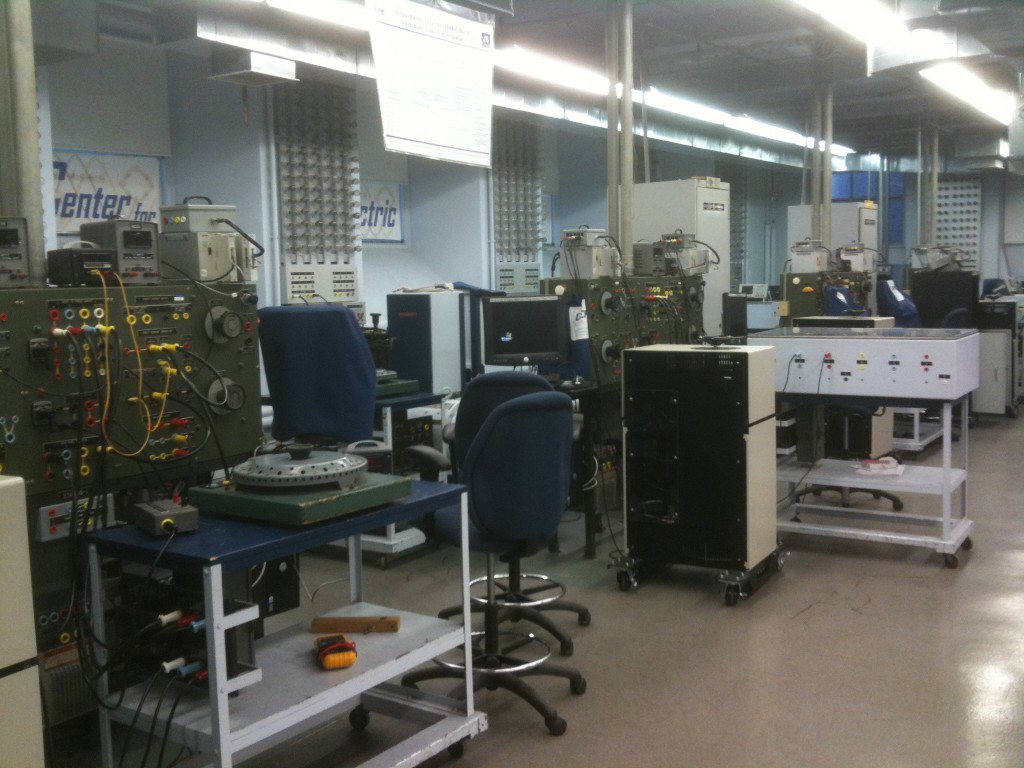Electric Power Transmission Systems
Electric power networks deliver the energy that drives modern society. Historically, these systems are represented by three distinct components: generation, transmission and distribution. Electric power transmission is the bulk transfer of electrical energy, from generating plants (historically hydroelectric, nuclear or coal fired but now also wind, solar, geothermal and other forms of renewable energy) to substations located near to population centers and generally provides multiple paths among them.
Multiple paths increase system reliability because the failure of one line does not cause a system failure. Most transmission lines operate with three-phase alternating current (ac).
General Description
The Interconnected Power Systems Laboratory (IPSL) has been designed to provide students with a hands-on learning experience about the attributes and implications involved in the management and control of a small electric power system. It is desired to teach students how to analyze real-life, three-phase power system networks and show them the modern tools that are available to energy management system (EMS) operators. The IPSL incorporates a small-scale energy management system to serve this purpose.
The main feature of the IPSL is that it uses real-life generators, transformers, motors, loads, and relays interconnected through transmission lines to form a power system, which operates at a frequency of 60 Hz and a voltage level of 208 V.
Energy Management System (EMS)
The EMS emulator is used to monitor and control the power system. It consists of a supervisory control and data acquisition (SCADA) system, which uses remote terminal units (RTUs) to acquire data that is sent to a master computer for analysis.
While collecting the sampled data, the RTUs also:
• display oscillographic data
• calculate RMS voltages and currents, frequency, power, and power factor
• capture events, such as fault conditions
• package the processed data and send it over the network to the master station computer in near real-time
Experiments
The IPSL is integrated into Drexel’s electrical and computer engineering curriculum and several educational experiments have been developed to introduce students to power systems.
Electric Motor Control Principles (ECEP 352) and Energy Management Principles (ECEP 354) are some of the courses taught at Drexel that use the IPSL facilities to perform hardware and software labs.
Inside an IPSL Station
The image below shows the front panel of an IPSL Station and the back of the station with the cover removed. Each station contains the connection terminals for:
- AC and DC sources
- Field and armature circuits of the rotating machines
- Connections to the main transfer panel, where power can be routed to the loads (light bulb banks, inductor carts, and capacitor boxes)
- Transmission lines and transformers
The actual rotating machines and their protection systems are located behind each IPSL station (not pictured here). Signal conditioning boxes, used to measure sending end and receiving end voltages and currents, sit on top of each IPSL station.




